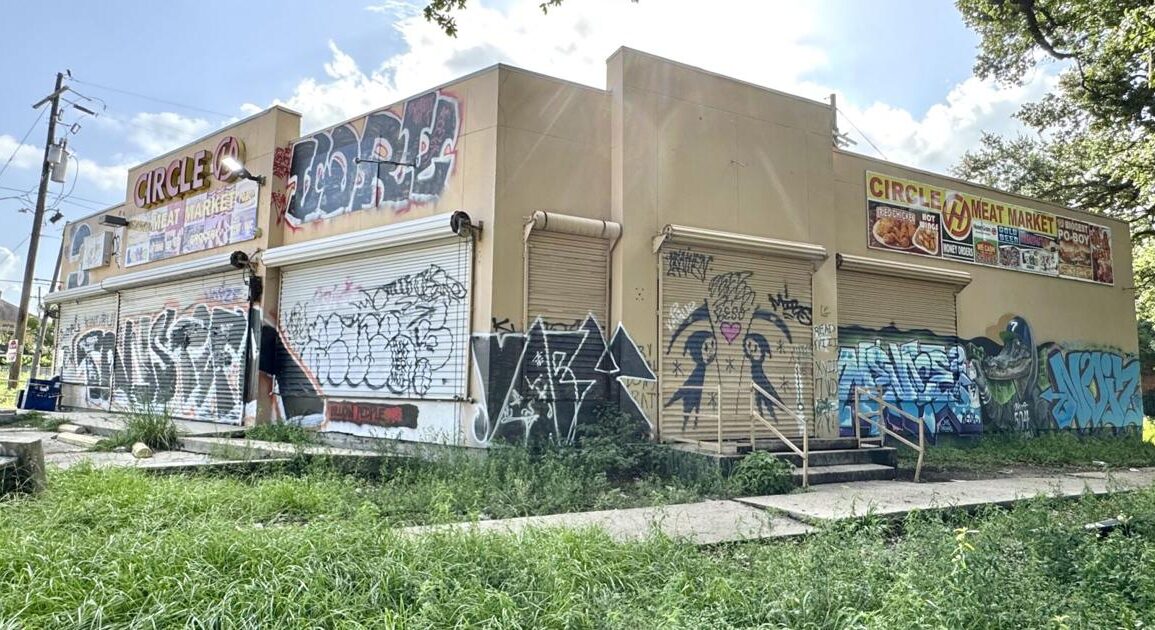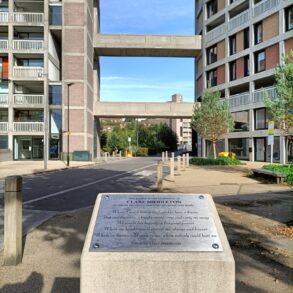For decades, graffiti has been a part of the New Orleans landscape.
But City Councilmember Eugene Green says he’s had enough. He wants the fine for graffiti writing to be increased from $100 to $500 or even $1,000.
In a telephone conversation Friday, Green said he’s been irritated by the graffiti epidemic for some time, but he was especially piqued on a recent visit to North Claiborne Avenue, where he couldn’t avoid noticing the spray-painted signatures, cartoons, and scribbles on the façades of buildings, fences and other features of the infrastructure.
Graffiti, he said, is getting worse, and “it is not a victimless crime.”

City Council member Eugene Green points to this former convenience store near the corner of North Claiborne and St. Bernard Avenues as an example of what he believes to be an upward trend in graffiti vandalism
Business owners and residents spend untold amounts of money erasing the aerosol hieroglyphics from their property, Green said. It’s money that “could have been utilized otherwise.” And the funds that the city uses to remediate graffiti would be better spent on other city priorities, he said.
If you consider those costs, it’s clear that graffiti is nothing more than vandalism and an impediment, Green said. “It is irresponsible, selfish, incredibly insensitive and disrespectful,” he said.
And it doesn’t occur just anywhere. Poor areas bear the brunt of the behavior, he said.
“Why do people think that there are certain neighborhoods that you can write all over everything,” Green asked, “but it’s not in other neighborhoods?”
Green is aware that murals are popular in the city and are welcome. But, he said, “we’re not talking about art. It’s important to separate art from mindless graffiti.”

The accumulation of graffiti on buildings like this one on North Claiborne Avenue have prompted city council member Green to call for higher fines for illegal painting
Carlos Fundora is a photographer and keen graffiti observer who formerly made a business of leading street-art walking tours in the Marigny and Bywater neighborhoods. Fundora says he doubts an increased fine will have much effect on graffiti writers, because risk is already part of the game.
Graffiti writers regularly put themselves in danger of injury and criminal violence, so being fined more money would be “the least of their worries,” he said.
“If the goal is graffiti abatement, I don’t think this alone will accomplish much of anything,” Fundora said. In his opinion, some combination of eliminating blighted structures and providing so-called “free walls,” where graffiti-style painting is authorized, might be more successful.
Green said that he has presented his aim to increase graffiti fines to the City Council, where it will eventually be voted on. In the meantime, he encourages citizens to not take graffiti for granted. He’d like to see more reports of the violation to aid in tracking down the culprits. “I’ve grown tired of it,” he said.
This post was originally published on this site be sure to check out more of their content.












